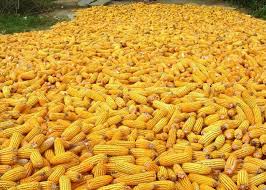🚫 Zimbabwe’s Maize Import Ban Shakes Up 🇿🇦 South African Market 🌽📉

- Zimbabwe has recently reinstated a maize import ban (end of August 2025), citing a bumper harvest which has made the country largely self‑sufficient for its milling/corn demand.
- In recent seasons, Zimbabwe’s maize production was low (around 800,000 tonnes in 2023/24), but improved rainfall, government schemes (like Pfumvudza), and expanded production have pushed its output to about 1.3 million tonnes for 2024/25.
- Zimbabwe’s annual maize consumption is around 1.8‑2.0 million tonnes, meaning even with the improved production, there remains a gap of roughly 700,000 tonnes in some estimates.
Impacts on South Africa’s Maize Market
Exports to Zimbabwe Decline Temporarily
- Zimbabwe has typically imported about 18‑20% of SA’s maize exports.
- With the ban on imports, SA exporters lose a key market in the short term
Surplus in South Africa - South Africa forecasts its maize production for 2024/25 to be approximately 15.8 million tonnes, much higher than its domestic requirement (~12 million tonnes).
- This implies a surplus that now has fewer regional outlets (since Zimbabwe is closed off for now). Exporters must look for other markets (Far East, broader Southern Africa excluding Zimbabwe).
Price Pressure Downwards (Short‑Term) in SA - With one of its major export destinations off the table temporarily, and with ample production, domestic maize prices in SA may come under downward pressure—especially if surplus maize floods available markets.
- However, global maize price trends and export parity rates also influence SA domestic prices, so price falls might be moderated.
Opportunities and Risks for Exporters - Exporters may seek to redirect maize volumes to other markets: Asia, Far East, other Southern African countries.
- But these markets may have higher costs (transport, tariffs), or less trade infrastructure, so profitability may be lower.
- There is also risk that Zimbabwe may re-enter the import market if its internal supply falls short later in the season, restoring some demand for SA maize.
Regional Competition
- Zambia is expected to produce about 3.66 million tonnes this season, exceeding its domestic consumption (~2.8 million), which may allow Zambia to export into Zimbabwe or other markets. This adds competition for SA in regional export markets.
- If Zambia or other neighbours fill demand in Zimbabwe (once the import ban is lifted, or via other policy arrangements), SA may lose market share.
- Effects on SA Domestic Policy & Producer Sentiment
- SA producers are likely to be affected by lower prices unless new export markets compensate for the loss of Zimbabwe demand.
- There may be calls for export incentives, or government support, to help transfer surplus to alternative markets.
